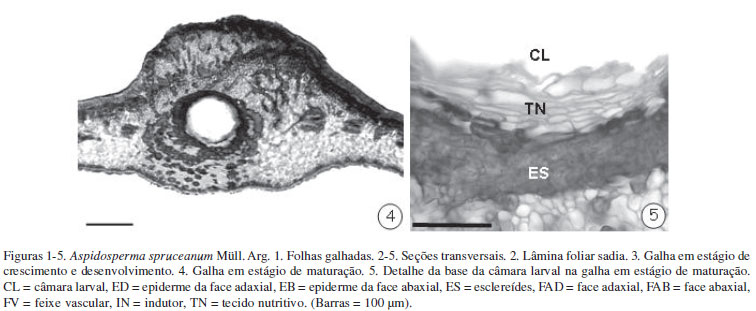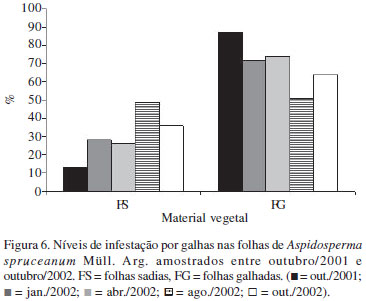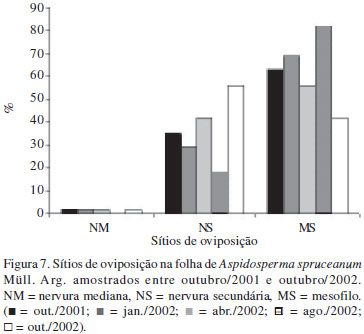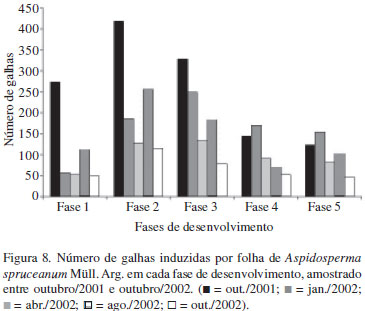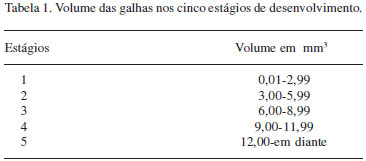Morphological alterations detected in several plant species due to gall induction are commonly followed by chemical changes fundamental to the establishment and maintenance of the host plant-gall maker system. The study of phenolic contents variation and its relation to gall development in Aspidosperma spruceanum-Cecidomyiidae system through a year-time detected two insect life cycles. The level of infestation was high, getting up to 87%, and the Cecidomyiidae preferentially oviposited in internervural region. Seasonal variation in phenolic contents in healthy and galled leaves detected in A. spruceanum was primarily related to abiotic conditions. Even though the levels of phenolic contents might get a maximum of 10 mg EAT g-1, which indicated a non stimulating cell chemical environment to gall induction and herbivore survivorship, A. spruceanum gall maker surpassed this chemical barrier, and might also be favored by the chemical protection against its natural enemies, that phenolic contents might confer.
Aspidosperma; Cecidomyiidae; galls; insect-plant interactions; morphometry



